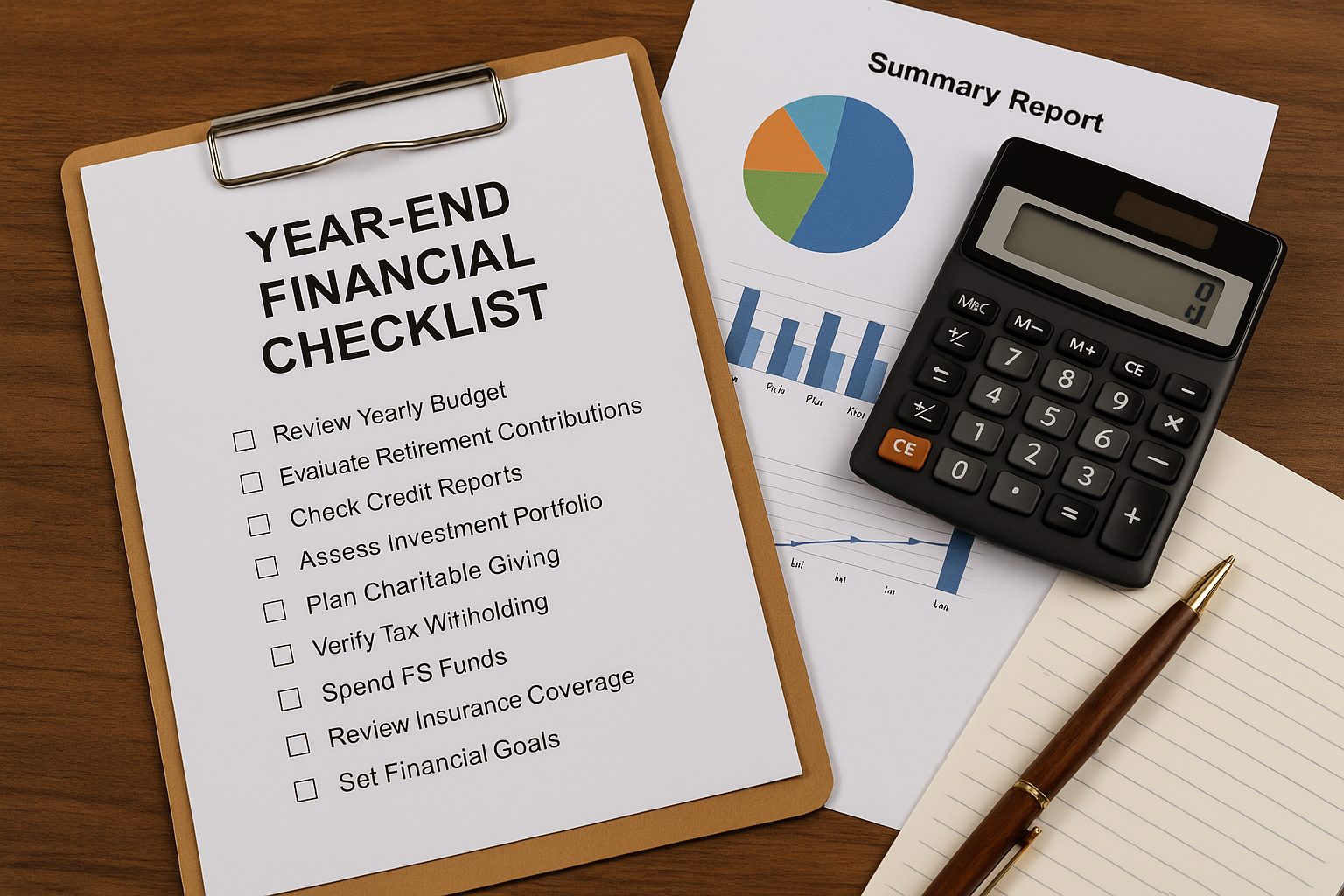As the year draws to a close, it’s the perfect opportunity to review your finances, make adjustments, and set yourself up for success in the coming year. A year-end financial checklist can help you identify gaps, maximize savings, and reduce stress when tax season arrives. Here’s how to perform a thorough year-end money reset in just a few focused steps.
1. Review Your Budget and Spending
Start by comparing your actual spending to your budget over the past year. Identify areas where you consistently overspent and consider adjusting those categories for the new year. If you don’t already track your spending, now is the perfect time to start using a budgeting app or spreadsheet to make next year’s review easier.
Quick Tip:
Look for recurring expenses you no longer need, such as unused subscriptions or memberships, and cancel them before the new billing cycle.
2. Maximize Your Retirement Contributions
Before the year ends, check your contributions to retirement accounts such as a 401(k) or IRA. If you haven’t hit the annual contribution limit and have extra funds, making an additional contribution can help you reduce your taxable income and boost your retirement savings.
3. Check Your Emergency Fund
Life is unpredictable, so ensuring your emergency fund is well-stocked should be a top priority. Aim for at least 3–6 months’ worth of essential expenses in a high-yield savings account. If you had to dip into it this year, plan to replenish it early in the new year.
4. Organize Tax Documents
Gather important tax-related paperwork now instead of waiting until April. This includes W-2s, 1099s, charitable donation receipts, investment statements, and any deductible expenses. Being organized now will save you time and stress during tax season.
5. Evaluate Insurance Coverage
Review your insurance policies—health, auto, home, and life—to make sure you have adequate coverage for your current needs. If your life circumstances have changed, such as a marriage, new child, or major purchase, you may need to update your coverage amounts or beneficiaries.
6. Plan for Upcoming Big Expenses
If you know you’ll have large expenses next year, such as travel, home improvements, or tuition, start setting aside money now. Creating a dedicated sinking fund will help you avoid debt when the expense arrives.
7. Review Investments and Asset Allocation
Assess your investment portfolio to ensure it’s still aligned with your financial goals and risk tolerance. Consider rebalancing if certain investments have grown disproportionately compared to others.
8. Set New Financial Goals
Finally, decide what you want to achieve financially next year. Whether it’s paying off debt, increasing savings, or investing more, set clear, measurable goals and create an action plan to achieve them.
Conclusion
A year-end money reset isn’t just about closing the books on this year—it’s about creating a stronger financial foundation for the next one. By reviewing your budget, organizing your records, and setting fresh goals, you’ll enter the new year with clarity and confidence.
